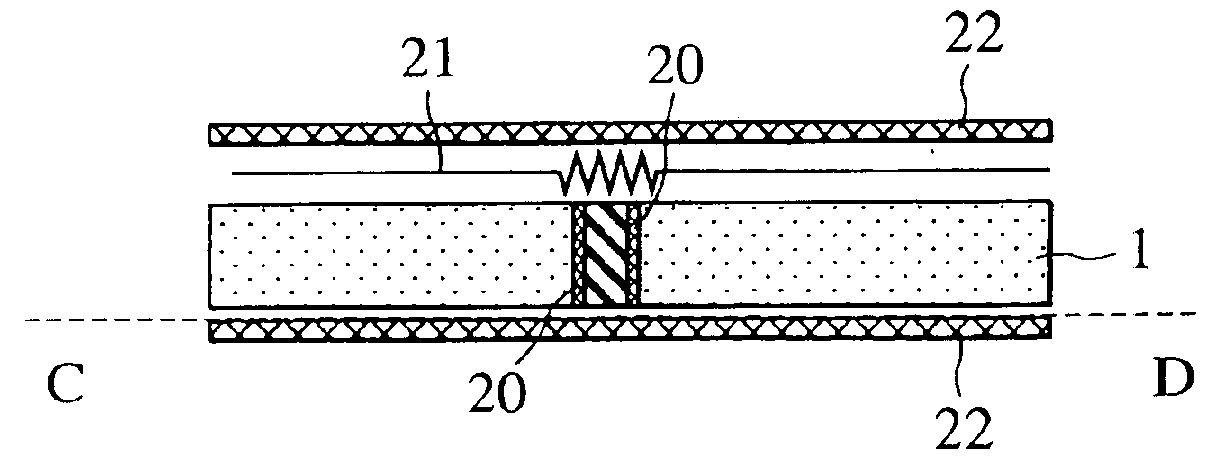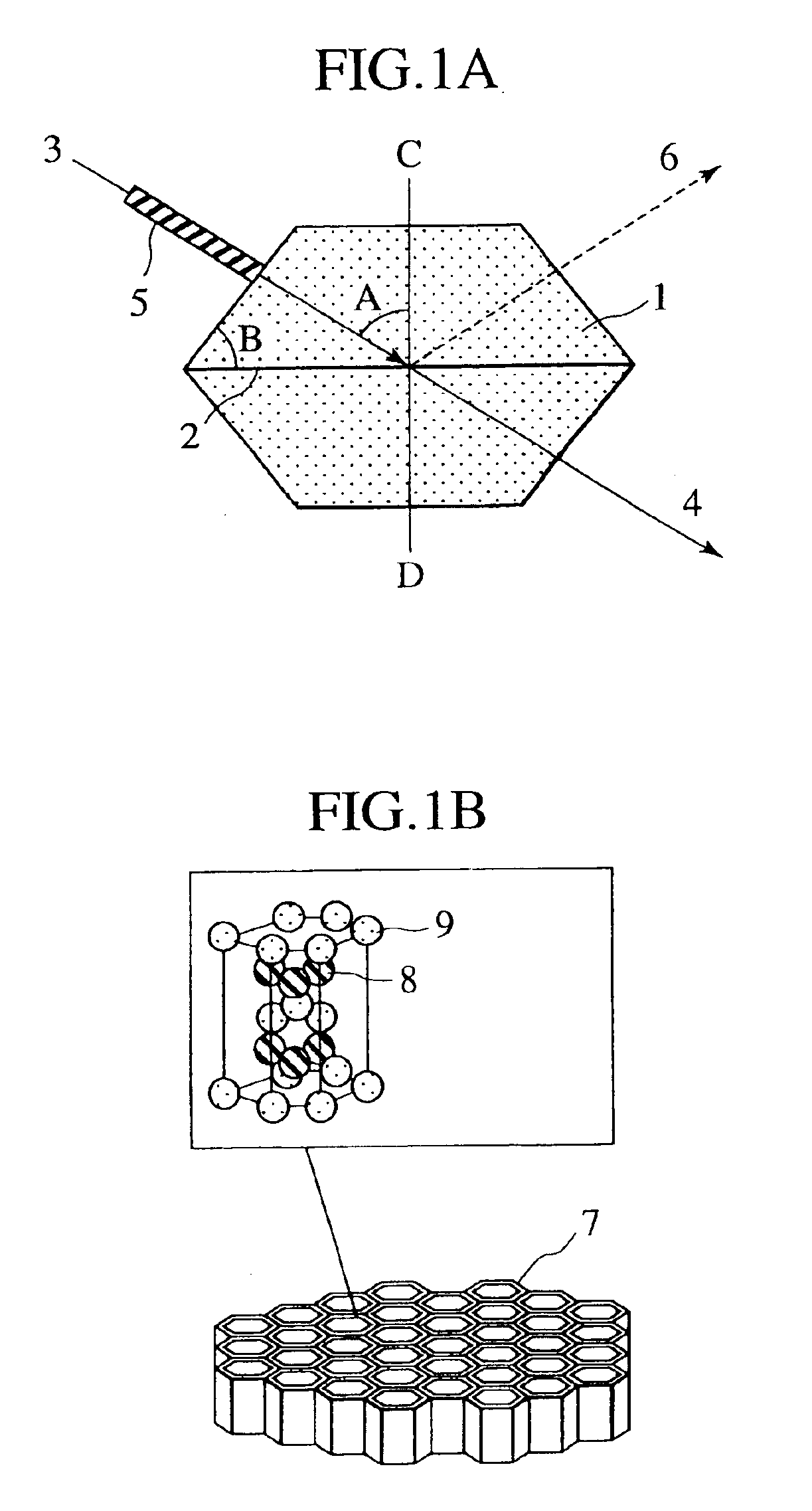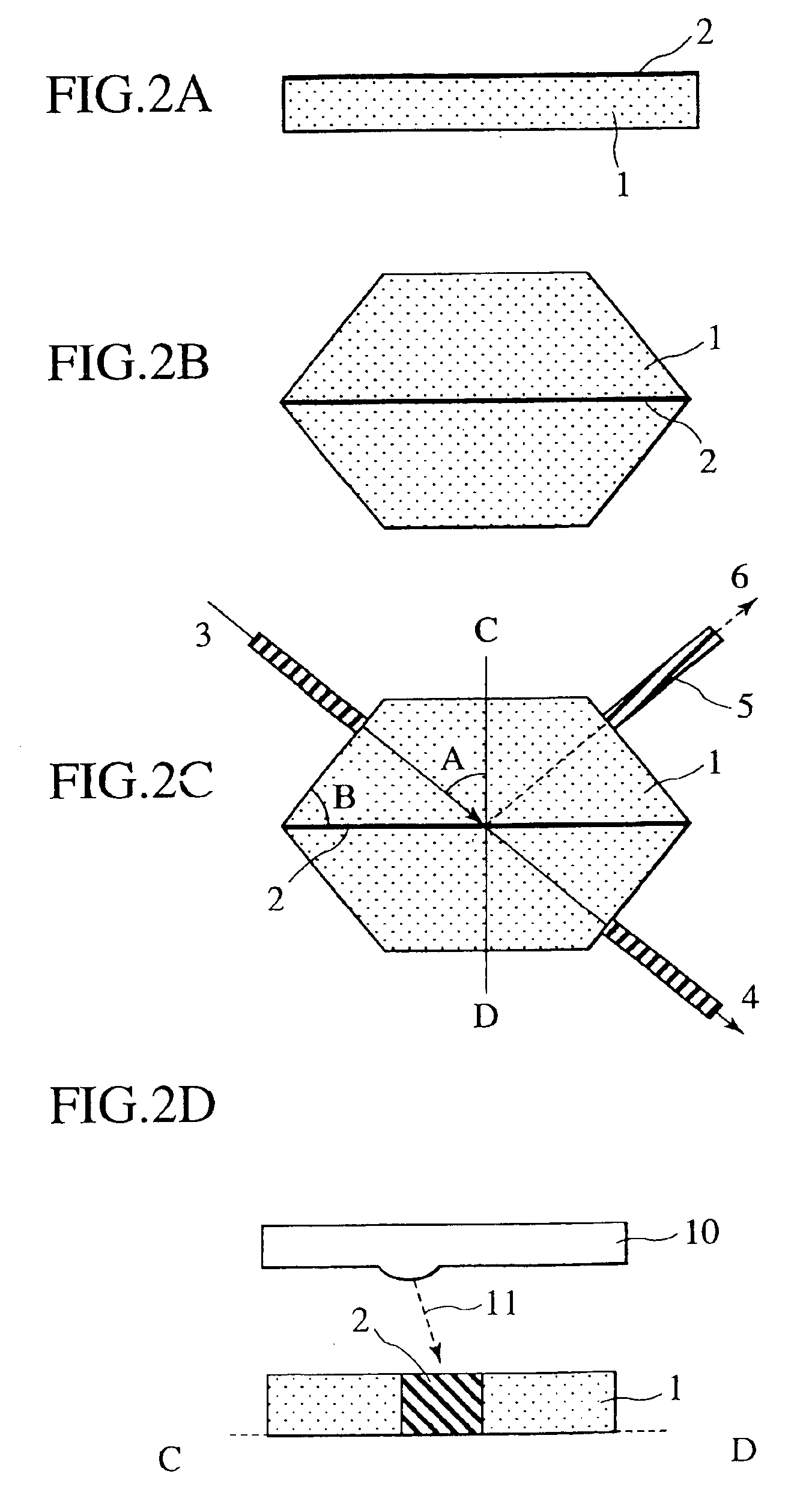Non-linear optical thin film, non-linear optical device using the same, and optical switch using the same
a technology of optical thin film and nonlinear optical device, applied in nonlinear optics, instruments, optics, etc., can solve problems such as signal attenuation, and achieve the effects of reducing loss, good switching characteristics, and reducing loss
- Summary
- Abstract
- Description
- Claims
- Application Information
AI Technical Summary
Benefits of technology
Problems solved by technology
Method used
Image
Examples
example 1
[0029]FIGS. 1A and 1B show a device for carrying out this example and a thin film used for the device, respectively. FIG. 1A is a schematic diagram showing a device structure investigated, and FIG. 1B is a schematic diagram showing a non-linear optical thin film used for the device, which comprises an oxide having the corundum type crystal structure and an amorphous oxide component. In the figures, numeral 1 denotes a glass substrate, 2 denotes a non-linear optical film comprising a metallic oxide and an amorphous oxide forming grain boundary portions thereof, 3 denotes signal light, 4 and 6 denote emitted light, 5 denotes a fiber, 7 denotes the amorphous portion, 8 denotes an oxygen atom, and 9 denotes a metal atom. In addition, character A denotes the angle of incidence of signal light, and B denotes the inclination angle of the substrate.
[0030]The glass substrate 1 was obtained by doping quartz glass with titanium oxide, and so conditioning as to obtain a refractive index of 1.65...
example 2
[0056]The non-linear optical thin film in Example 1 was obtained by growing crystal grains in a columnar shape. When the crystal grains are grown in a columnar form from the substrate, a great optical anisotropy results. Now, the results of the case where a non-linear optical thin film was grown obliquely, for investigation of the anisotropy of the film, will be shown below. FIG. 6 illustrates the method of growth, in which numeral 19 denotes a sputter target, and 1 denotes a glass substrate. As shown in the figure, the non-linear optical thin film was grown with the substrate inclined by an angle of 5°.
[0057]When a cross section of the thin film portion thus formed was observed under a TEM (transmission electron microscope), it was observed that the thin film had been grown obliquely relative to the substrate, and it was confirmed that the direction of growth coincided with the inclination angle of 5°. An optical device was produced by application of the above-described production ...
example 3
[0064]An optical switch was produced by use of a non-linear optical device. Irradiation with laser light from a planar emission laser was conducted together with changeover information written in a light signal. The length of the changeover information was set to 20 ns, which corresponds to an ordinary data transfer speed at present. As a result, it was found that the optical path of the input light was changed over based on the changeover information.
[0065]As described above, use of the thin film according to the present invention makes it possible to produce a device that can perform changeover or turning-ON / OFF of optical path efficiently and with low loss. While the changeover of optical path was evidenced in this example, it is possible to use the optical device as an optical shutter or a fuse, by absorbing the output light in either direction of the emission optical paths 4 and 6 by use of a filter for absorbing the light.
PUM
| Property | Measurement | Unit |
|---|---|---|
| mean particle diameter | aaaaa | aaaaa |
| wavelength | aaaaa | aaaaa |
| signal transmittance | aaaaa | aaaaa |
Abstract
Description
Claims
Application Information
 Login to View More
Login to View More - R&D
- Intellectual Property
- Life Sciences
- Materials
- Tech Scout
- Unparalleled Data Quality
- Higher Quality Content
- 60% Fewer Hallucinations
Browse by: Latest US Patents, China's latest patents, Technical Efficacy Thesaurus, Application Domain, Technology Topic, Popular Technical Reports.
© 2025 PatSnap. All rights reserved.Legal|Privacy policy|Modern Slavery Act Transparency Statement|Sitemap|About US| Contact US: help@patsnap.com



